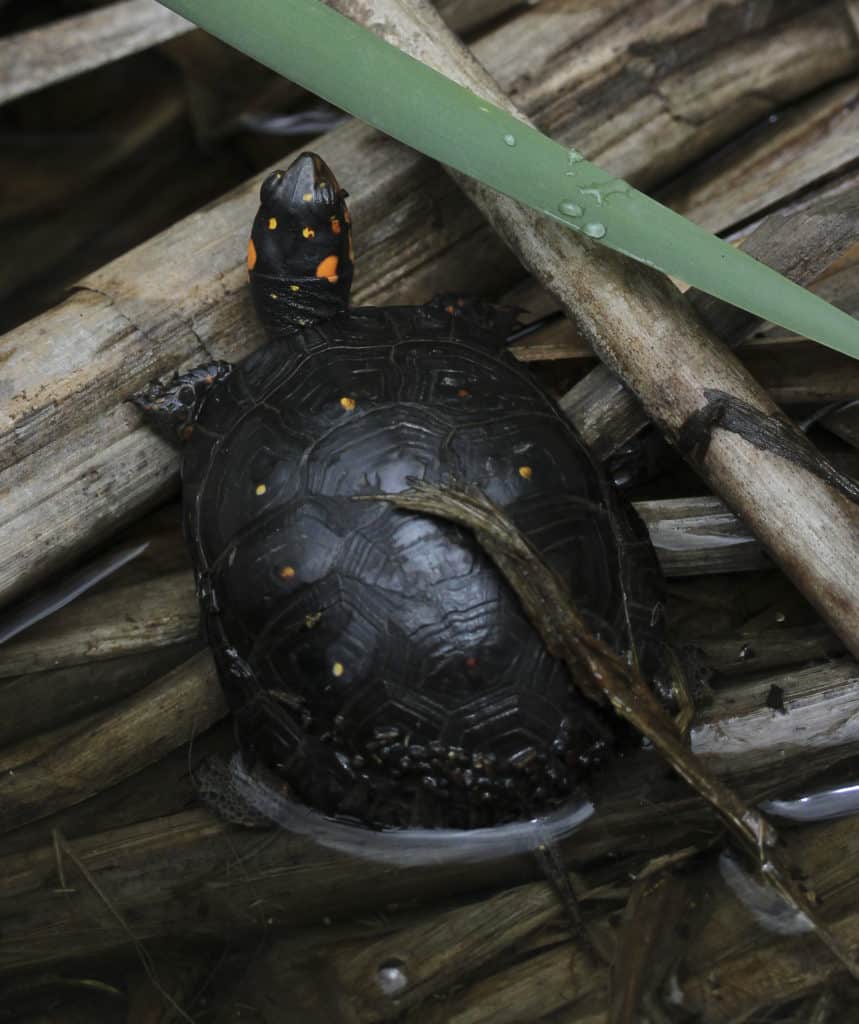Spotting Spotted Turtles

Over the years, I have always tried to get out and explore semi-wild spaces on a weekly basis. It allows me to wind down and feel that certain kind of calm that the woods and nature bring. Because our current situation calls for social isolation, I think it is a good time to explore local parks, trails [those where it’s possible to maintain six feet] and just get outside.
On one of my spring trips I found a very special turtle, a spotted turtle. I was walking on the boardwalk at Huntley Meadows Park in Virginia. The day was cool but the sun was out and at the edge of the bog was a small dark turtle with bright yellow spots. It was trying to get warm in the sun. That was only the second one I have seen in the wild.
Spotted turtles have no close relatives; they are in a genus all their own. They live in eastern North America from Florida to Canada and prefer calm shallow water and bogs. These omnivores eat almost anything they can get in their mouths.
They are small turtles that rarely grow over four inches but can live to be over 100 years old. They do not reach sexual maturity until over 15 years old. The sexes, similar to a few other turtles, are determined by the temperature during incubation. The young have only one yellow spot per shell plate, about 15, but as they age more spots appear, up to 100 yellow spots can show up.
Each turtle lives within a very small range so they have trouble adapting to habitat loss and draining of wetlands. Their numbers are also threatened by reptile collectors.
The tiny turtle I found at Huntley Meadows (see photo) could have been a century old—they stop growing after about 15 years. I enlarged the photo to count the rings on the scute (shell plates). It appears this turtle was between 10 and 14 years old. It is hard to believe that a 10-year-old turtle is still a juvenile.
Get out and take a walk in the woods. The wildflowers have started to bloom and the birds have started their spring songs.
